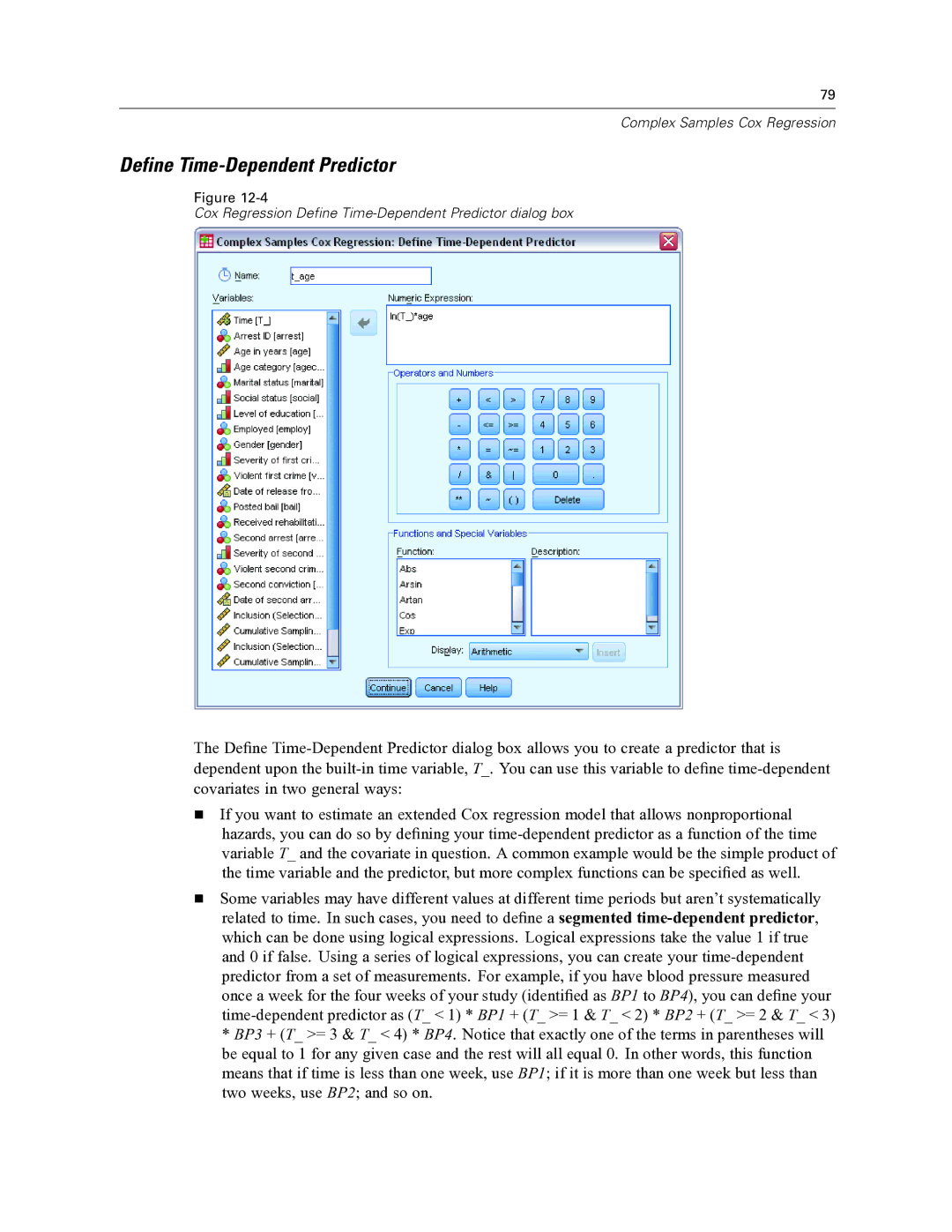79
Complex Samples Cox Regression
Define Time-Dependent Predictor
Figure 12-4
Cox Regression Define Time-Dependent Predictor dialog box
The Define Time-Dependent Predictor dialog box allows you to create a predictor that is dependent upon the built-in time variable, T_. You can use this variable to define time-dependent covariates in two general ways:
If you want to estimate an extended Cox regression model that allows nonproportional hazards, you can do so by defining your time-dependent predictor as a function of the time variable T_ and the covariate in question. A common example would be the simple product of the time variable and the predictor, but more complex functions can be specified as well.
Some variables may have different values at different time periods but aren’t systematically related to time. In such cases, you need to define a segmented time-dependent predictor, which can be done using logical expressions. Logical expressions take the value 1 if true and 0 if false. Using a series of logical expressions, you can create your time-dependent predictor from a set of measurements. For example, if you have blood pressure measured once a week for the four weeks of your study (identified as BP1 to BP4), you can define your time-dependent predictor as (T_ < 1) * BP1 + (T_ >= 1 & T_ < 2) * BP2 + (T_ >= 2 & T_ < 3)
*BP3 + (T_ >= 3 & T_ < 4) * BP4. Notice that exactly one of the terms in parentheses will be equal to 1 for any given case and the rest will all equal 0. In other words, this function means that if time is less than one week, use BP1; if it is more than one week but less than two weeks, use BP2; and so on.

